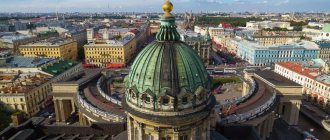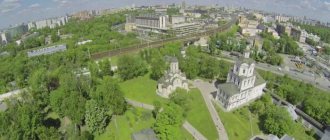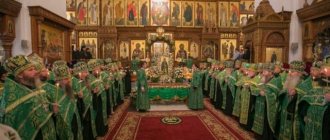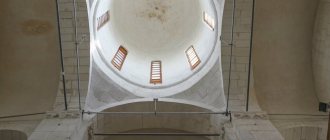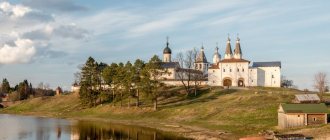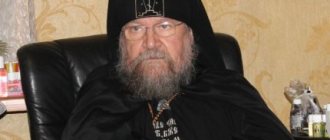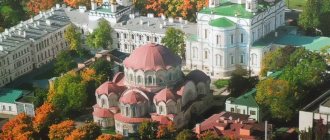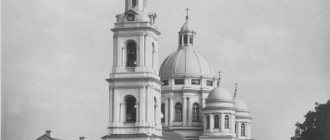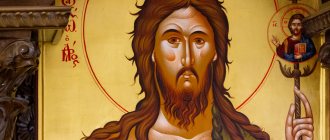Mir
Russia St. Petersburg Chesme Church of the Nativity of John the Baptist (St. Petersburg) Map is loading…
{"format":"leaflet","minzoom":false,"maxzoom":false,"limit":50,"offset":0,"link":"all","sort":[""], "order":[],"headers":"show","mainlabel":"","intro":"","outro":"","searchlabel":"\u2026 \u0441\u043b\u0435\ u0434\u0443\u044e\u0449\u0438\u0435 \u0440\u0435\u0437\u0443\u043b\u044c\u0442\u0430\u0442\u044b","default":"","import-annotation":false,"width ":"auto","height":"350px","centre":{"text":"","title":"""link":"","lat":59.85696999999999690089680370874702930450439453125,"lon": 30.330929999999998614157448173500597476959228515625,"icon":""},"title":"","label":"","icon":"","lines":[],"polygons":[],"circles":[ ],"rectangles":[],"copycoords":false,"static":false,"zoom":8,"defzoom":14,"layers":["OpenStreetMap"],"image layers":[] ,"overlays":[],"resizable":false,"fullscreen":true,"scrollwheelzoom":true,"cluster":false,"clustermaxzoom":9,"clusterzoomonclick":true,"clustermaxradius":80, "clusterspiderfy":true,"geojson":"","clicktarget":"","showtitle":true,"hidenamespace":false,"template":"","userparam":"","activeicon": "","pagelabel":false,"ajaxcoordproperty":"","ajaxquery":"","locations":[{"text":"\u003Cb\u003E\u003Ca href=\"/palomnik/%D0% A7%D0%B5%D1%81%D0%BC%D0%B5%D0%BD%D1%81%D0%BA%D0%B0%D1%8F_%D1%86%D0%B5%D1%80% D0%BA%D0%BE%D0%B2%D1%8C_%D0%A0%D0%BE%D0%B6%D0%B4%D0%B5%D1%81%D1%82%D0%B2%D0% B0_%D0%98%D0%BE%D0%B0%D0%BD%D0%BD%D0%B0_%D0%9F%D1%80%D0%B5%D0%B4%D1%82%D0%B5% D1%87%D0%B8_(%D0%A1%D0%B0%D0%BD%D0%BA%D1%82-%D0%9F%D0%B5%D1%82%D0%B5%D1%80% D0%B1%D1%83%D1%80%D0%B3)\» title=\»\u0427\u0435\u0441\u043c\u0435\u043d\u0441\u043a\u0430\u044f \u0446\u0435\u0440\u043a \u043e\u0432\u044c \u0420\u043e\u0436\u0434\u0435\u0441\u0442\u0432\u0430 \u0418\u043e\u0430\u043d\u043d\u0430 \u041f\u0440 \u0435\u0434\u0442\u0435\u0447 \u0438 (\u0421\u0430\u043d\u043a\u0442-\u041f\u0435\u0442\u0435\u0440\u0431\u0443\u0440\u0433)\»\u003E\u0427\u0435\u0441\u04 3c\u0435\u043d\ u0441\u043a\u0430\u044f \u0446\u0435\u0440\u043a\u043e\u0432\u044c \u0420\u043e\u0436\u0434\u0435\u0441\u0442\u0432\u0430 \u 0418\u043e\u0430\u043d\u043d\ u0430 \u041f\u0440\u0435\u0434\u0442\u0435\u0447\u0438 (\u0421\u0430\u043d\u043a\u0442-\u041f\u0435\u0442\u0435\u0440\u0431\u 0443\u0440\u0433)\u003C /a\u003E\u003C/b\u003E\u003Chr /\u003E\u003Ca href=\»/palomnik/%D0%A1%D0%B2%D0%BE%D0%B9%D1%81%D1%82%D0 %B2%D0%BE:%D0%90%D0%BD%D0%BD%D0%BE%D1%82%D0%B0%D1%86%D0%B8%D1%8F\» title=\»\ u0421\u0432\u043e\u0439\u0441\u0442\u0432\u043e:\u0410\u043d\u043d\u043e\u0442\u0430\u0446\u0438\u044f\u003E\u0410\u043d\u 043d\u043e\u0442\u0430 \u0446\u0438\u044f\u003C/a\u003E: »'\u0427\u0435\u0441\u043c\u0435\u043d\u0441\u043a\u0430\u044f \u0446\u0435\u0440\u043a\u 043e\u0432\u044c" ' ' 4\u044b\u0440\u0443\u0441\ u0441\u043a\u043e\u0433\u043e \u0444\u043b\u043e\u0442\u0430 \u043d\u0430\u0434 \u0442\u0443\u0440\u0435\u0446\u043a\u0438\u 043c\u0432\u0427\u0435\u0441\ u043c\u0435\u043d\u0441\u043a\u043e\u0439 \u0431\u0443\u0445\u0442\u0435 \u0432 1770","title":"\u0427\u0435\u0441\u043c\u0435\u04 3d\u0441\u043a\ u0430\u044f \u0446\u0435\u0440\u043a\u043e\u0432\u044c \u0420\u043e\u0436\u0434\u0435\u0441\u0442\u0432\u0430 \u0418\u043e\u 0430\u043d\u043d\u0430\u041f\ u0440\u0435\u0434\u0442\u0435\u0447\u0438 (\u0421\u0430\u043d\u043a\u0442-\u041f\u0435\u0442\u0435\u0440\u0431\u0443\u0440\u0 433)","link": "","lat":59.85696999999999690089680370874702930450439453125,"lon":30.3309299999999998614157448173500597476959228515625,"icon":""}]" imageLayers":[]}
59.856939; 30.330942
Russia, St. Petersburg, Lensoveta street, 12
Saint Petersburg
Russia
Telephone.:
+7 (812) 373-61-14
Email:
,
Chesme Church
built in honor of the victory of the Russian fleet over the Turkish in Chesme Bay in 1770. Currently, the church is an architectural monument of federal significance. Near the church there is the Chesme military cemetery.
History[[edit]h2>
Not far from Moskovsky Prospekt, among the gray buildings of the Stalin era and low-growing Khrushchev-era buildings, on a small square, a white and pink miracle appears before our eyes - an elegant and light church in a pseudo-Gothic style, with pointed turrets directed towards the sky and high lancet windows. On the contrary, behind a row of young linden trees, the outlines of a once magnificent medieval castle can be seen. This unique architectural ensemble was created by the famous architect Yu. M. Felten. And the history of its creation goes back centuries.
In 1774, by order of Catherine II, at the 7th verst of the Tsarskoe Selo road, the construction of a traveling palace began for short-term stops of the imperial court during travel from St. Petersburg to Tsarskoe Selo. The small two-story building, which had the shape of an equilateral triangle in plan, was located “on an elevated meadow, surrounded by an earthen rampart overgrown with grass.” The palace was supposed to create the illusion of a ancestral knight's castle. From the walls of the palace, numerous images of the ancestors of Catherine II and related reigning houses looked out at its guests, foreign ambassadors. The area around was called “Kikerikeksen” (in Finnish “Frog Swamp”), so when the construction of the palace was completed in 1777, it was named Kikerikeksen.
According to legend, it was at this place that Empress Catherine the Great received news of the Chesme victory over the Turkish fleet. June 24, 1770, on the day of the Nativity of St. John the Baptist, the battle began at Fr. Chios, as a result of which the Turkish fleet retreated to Chesme Bay. And on the night of June 25-26, Russian sailors managed to set fire to several enemy ships in the bay, after which the entire Turkish fleet caught fire. More than sixty Turkish ships and over ten thousand sailors and officers were killed. Losses on Russian ships amounted to 10 people.
This was the first naval victory won by the fleet of the Russian Empire since the time of Peter the Great. The highest rescript established a silver medal depicting an attack by Russian ships on a Turkish squadron and the burning of Turkish ships. The laconic inscription informed about the fate of the Turkish fleet: “WAS”. In honor of the victory, several monuments were created in the vicinity of St. Petersburg: the Chesme Obelisk in Gatchina, the Chesme Hall in the Great Peterhof Palace, the rostral Chesme Column in the center of the Big Pond in the Catherine Park of Tsarskoe Selo. But Catherine the Great attached special importance to the construction of the memorial temple.
The temple in the name of the Baptist and Forerunner of the Lord John was founded in 1777 opposite the Kikerikesen Palace, in the presence of the Swedish king Gustav III. On June 24, 1780, on the 10th anniversary of the brilliant victory of the Russian fleet at Chesma, in the presence of the Roman Emperor Joseph II, the temple was consecrated. The church and palace were named Chesme. The entire area around begins to be called CHASMA.
Catherine the Great loved Chesma and came here twice a year, for the temple holiday and for Maslenitsa. Especially for the empress, a royal place was created in the church under a canopy of red velvet, crowned with a double-headed eagle. After the Divine Liturgy there was a magnificent dinner, in the summer - boat rides, with loud music, accompanied by a brilliant retinue, in the winter - sleigh rides, crowded fairs, fireworks. Chesma becomes the center of a huge suburban area.
In 1830, by order of Emperor Nicholas I, an almshouse was established in the Chesme Palace for veterans and disabled people of the Patriotic War of 1812. Three two-story outbuildings were added to the palace, which housed 400 privates and 16 officers (among them there were many Knights of St. George). The area around is being actively improved by the new residents of the palace: a park was laid out, three new chapels were built. The Chesme almshouse was supervised by the Alexander Committee for the wounded, and the trustees were the Grand Dukes.
The tradition of serving the Divine Liturgy and arranging large dinners for invited guests continued until 1919, when the military almshouse was hastily liquidated, and the disabled elderly were transferred to almshouses in the Petrograd region. The first forced labor camp (concentration camp) “Chesmenka” in Soviet Russia was located in the Chesme Palace.
At the same time, the Church of St. John the Baptist (Chesmenskaya). The icons and utensils were expropriated and transferred to the State Hermitage. Parishioners were allowed to gather in the house of Baron Weber, the owner of a varnish and paint factory, where services were held until 1924. The last parish priest was Father John Popov. The building of the closed Chesme Church was used as a warehouse. In the winter of 1930, a fire destroyed the unique iconostasis, designed by the architect Chesma Yu. M. Felten.
During the Great Patriotic War, the palace and church, located on the front line of defense, were badly damaged. Already in 1946, the palace was renovated, the building of which was transferred to the Leningrad Institute of Aviation Instrumentation even before the war. In the 1970s, the church building was restored and adapted to serve as a branch of the Central Naval Museum "Chesme Victory".
Architecture
temple building in pseudo-Gothic style. Today it is still called neo-Gothic. The architectural forms are created in the form of a quatrefoil , and the structure of the church is basically square. This is the so-called quadrifolium. To be more precise, the plan contains an equal-armed cross in the Greek style. However, from the outside the temple appears round , since semicircular projections - apses - are attached to it on all sides.
The church is crowned with five domes - a common number of domes in Russian Orthodox churches. Small domes. They have low spiers that end in balls with openwork crosses. Bells hang in the drums of the temple. Above the entrance on the left and right you can see two white statues - Faith and Hope. One holds a cross and a cup in her hands, the other holds a flame and a palm branch. The bas-relief representing the All-Seeing Eye of the Lord is also noteworthy He is surrounded by images of cherubs and rays.
danikbobo
khisamiev.ru
karelina_fox
streetlamp_spb
Gothic elements can be seen in small narrow decorative turrets or pinnacles with crenellations and in the high lancet window openings characteristic of this style Another typically Gothic device is a rose placed above the entrance to the temple. This is a large round window with partitions that create a flower-like design. The walls of the temple red-pink , the walls are complemented by a large number of vertical white lines and lace patterns. All this gives the rather massive structure a feeling of lightness and airiness.
Current state[[edit]h2>
The revival of Chesma began in 1990. The Church of the Nativity of St. John the Baptist was transferred to the St. Petersburg diocese, a parish headed by its rector, Archpriest Alexei Krylov. The first prayer service took place on December 31, 1990 in front of the closed doors of the temple. In 1998, the iconostasis was recreated according to the original design of the 18th century. In the same year, the complete consecration of the temple by Metropolitan Vladimir of St. Petersburg and Ladoga took place.
The small military cemetery (Chesmenskoye), located behind the temple, where the ashes of veterans of the war of 1812-14, Red Army soldiers and defenders of Leningrad who died during the Great Patriotic War, are buried, is the official site of celebrations in the Moscow region on the eve of Victory Day. The clergy of the temple hold memorial services here every year.
Interior decoration
The inside of the temple is decorated with white rods , as well as rosettes and panels . But at the same time, the interior looks simple and strict. The main thing that attracts attention is the iconostasis, which is a copy of the original one that burned down during a fire in the 30s. It was created according to a drawing by the architect of the church, J. Felten. The iconostasis is made in white and decorated with gilded carvings. The iconographic images are bright and written in the Italian style. Here you can see the images:
- Jesus Christ
- Mother of God
- John the Baptist
- Great Martyr Catherine
- last supper
- Hieromartyr Iannuarius
- Venerable David of Thessalonica
- Michael the Archangel
- First Martyr Archdeacon Stephen.
marik224
avilonatur
avilonatur
avilonatur
tartanparty
On top of the iconostasis there are gilded sculptures in the form of the Crucifixion of Jesus the Virgin Mary and the Apostle John the Theologian standing next to him , as well as figures of angels.
Closing of the church, melting down the bells, Soviet years, fire
In 1919, the Chesme Church was closed. Despite the requests of the rector, the resumption of services was prohibited. Parishioners and church ministers were nevertheless able to resume services in another place - at the dacha of K. K. Weber at 29 Moskovskoye Shosse.
During the Soviet years, the church was located on the territory of the first forced labor camp. In 1924, the bells were removed from the bell tower and sent for melting down. Instead of a cross, sculptures of an anvil, tongs and a hammer were installed on the dome.
After the camp was closed in 1924, the church for some time housed the archives of the Main Science and Technology, and since 1930, the carpentry workshops of the Automobile Road Institute.
That same year there was a major fire in the temple. The altar and most of the interior decoration, including the iconostasis, burned down. In 1941, the church building was allocated as a warehouse for the Aviation Instrument-Making Institute.
Several titles
The Chesme church did not immediately become a church. At first it was a temple at the Travel Palace of Catherine II. It was called quite unusually - “Kikeriki”. The temple was so nicknamed because of its location: the area was swampy in the 18th century, and the Finns who once lived here called it Kikerikeksen, which means “frog swamp.”
The Empress ordered the church to be called “Chesme” - in honor of the victory of the Russian fleet over the Turkish in Chesme Bay.
Although they deviated somewhat from the order: after the consecration, the church was transferred to the chapter of the Order of St. George the Victorious, therefore for some time it was called “Georgievskaya”, later – Chesmenskaya.
The full name is the Church of the Nativity of St. John the Baptist.
Photo: Instagram / @oxana_zakrevskaya, @mysaint_p
Useful information for visitors
The ancient church is a functioning Orthodox church. Divine services are held there daily. On weekdays and on Sundays at 10:00, and on Saturdays at 10:00 and 18:00. The church has a Sunday school, a women's vocal ensemble, choirs for adults and children, a family club and an architectural and art workshop.
Sculptures “Faith” (left) and “Hope” (right) above the entrance to the Chesme Church

